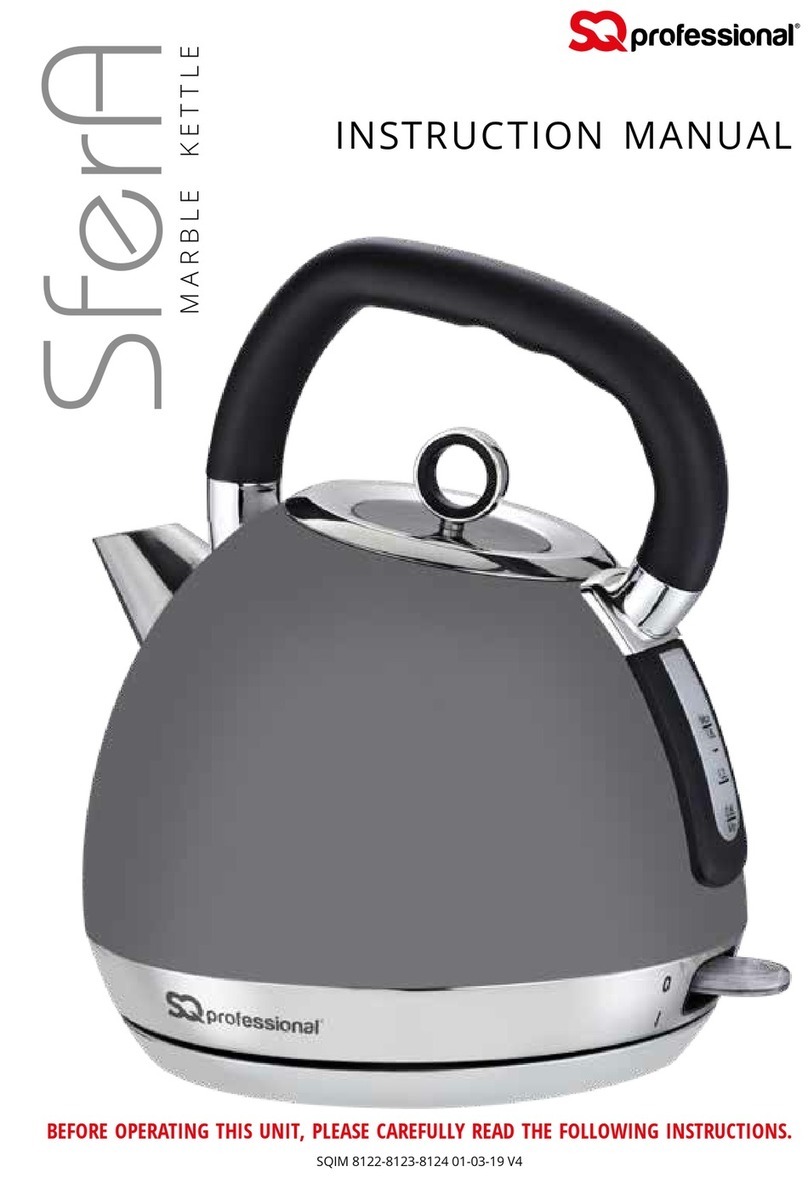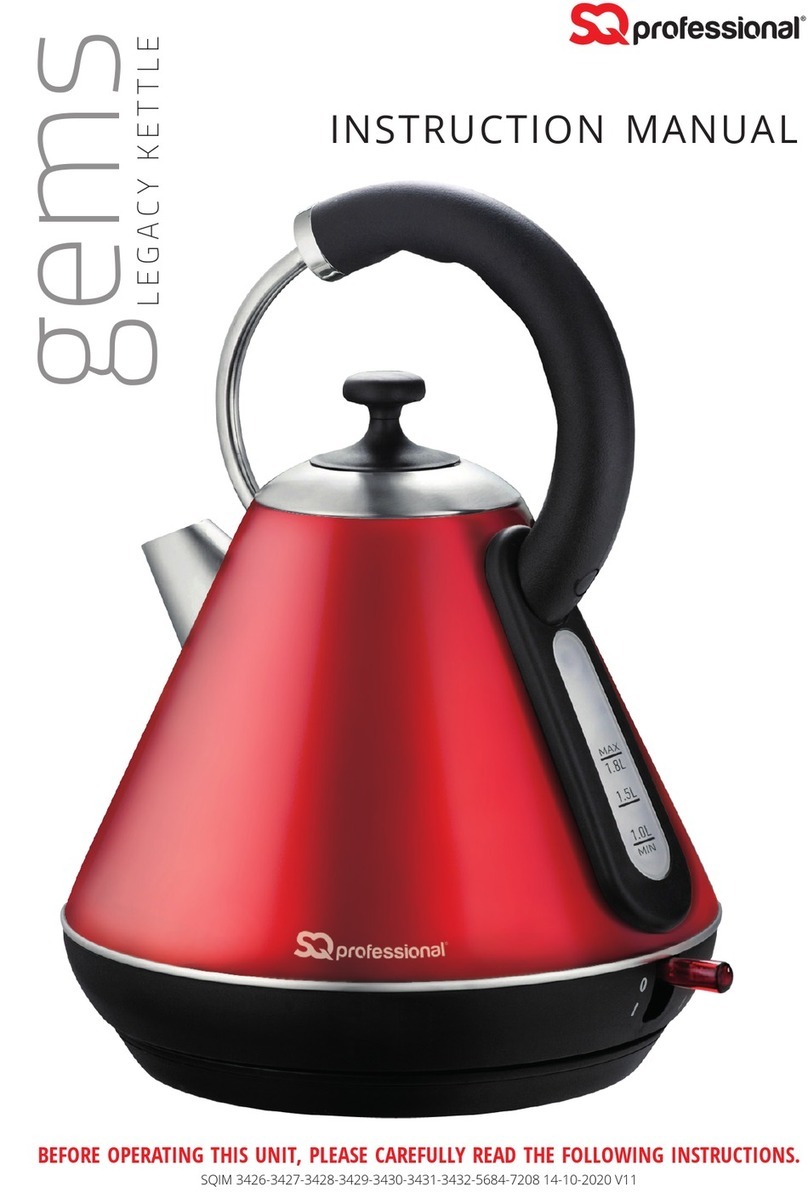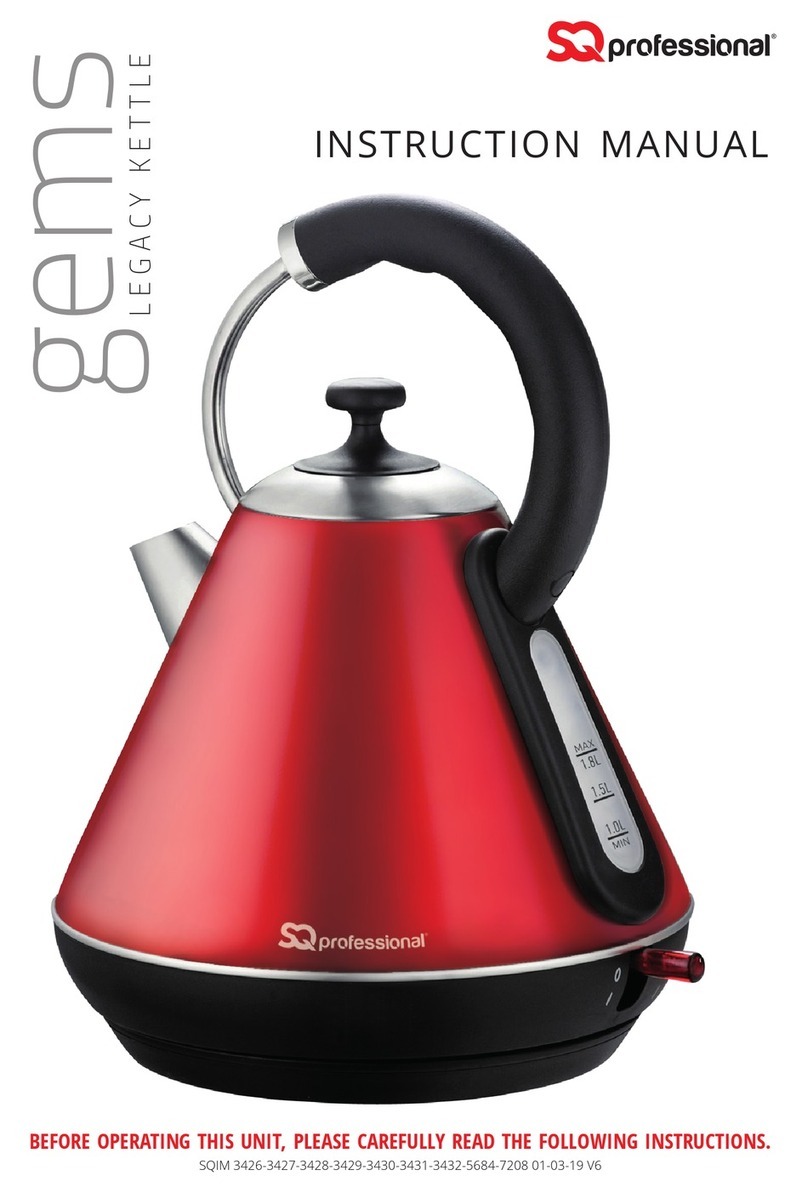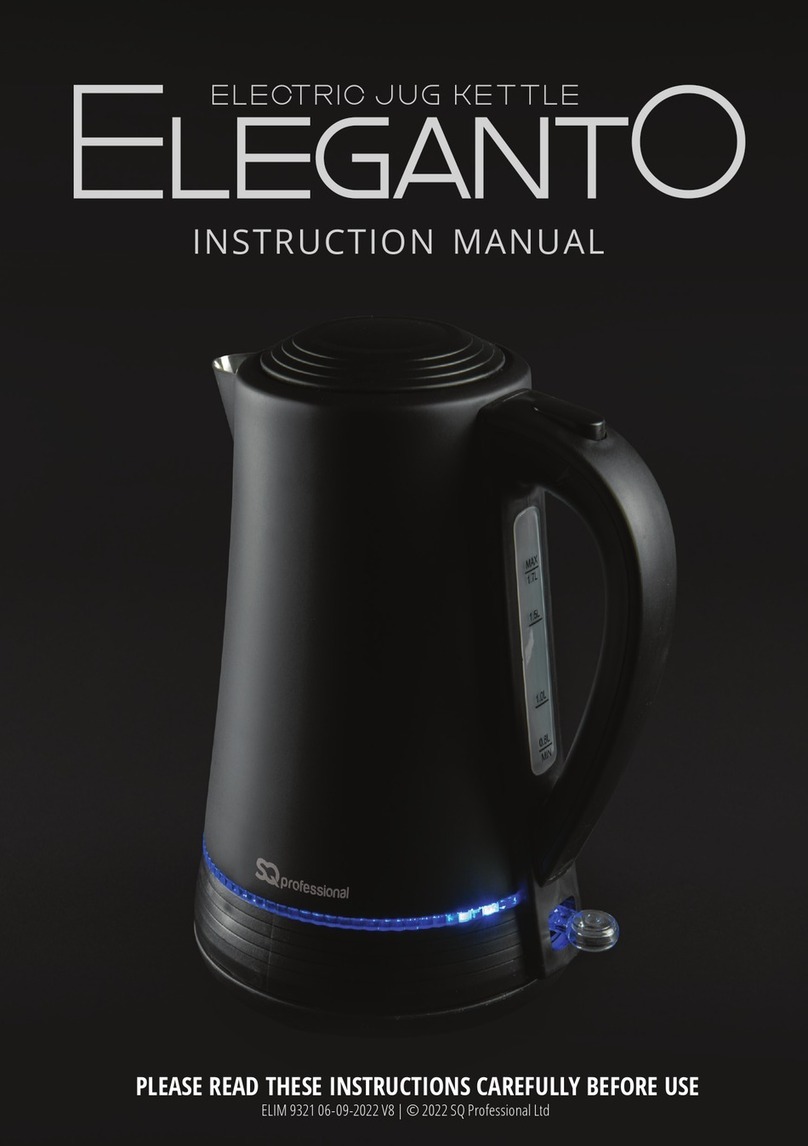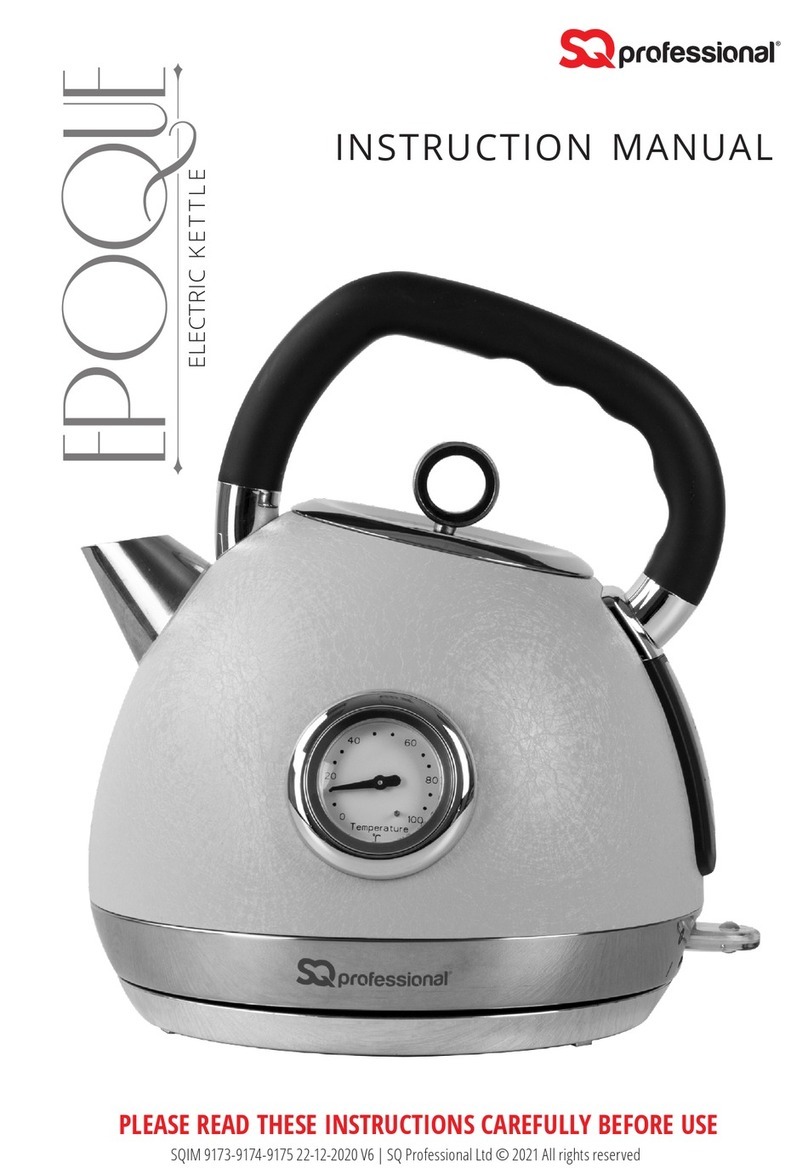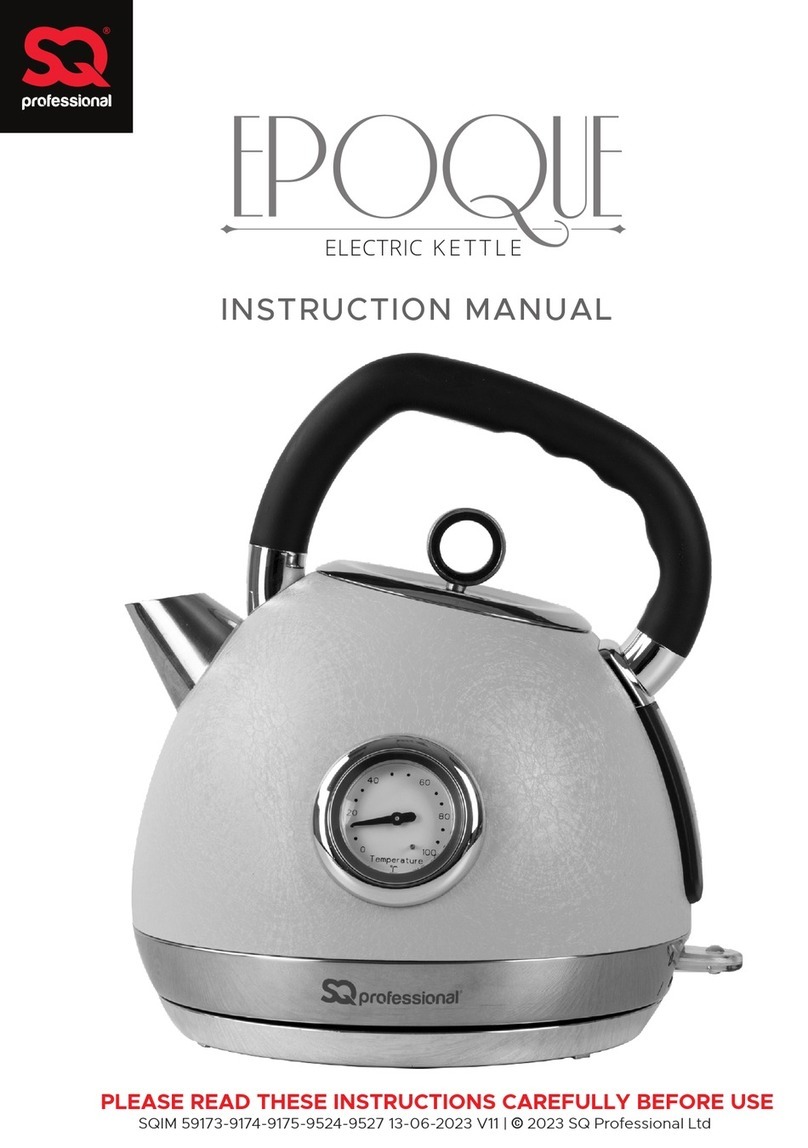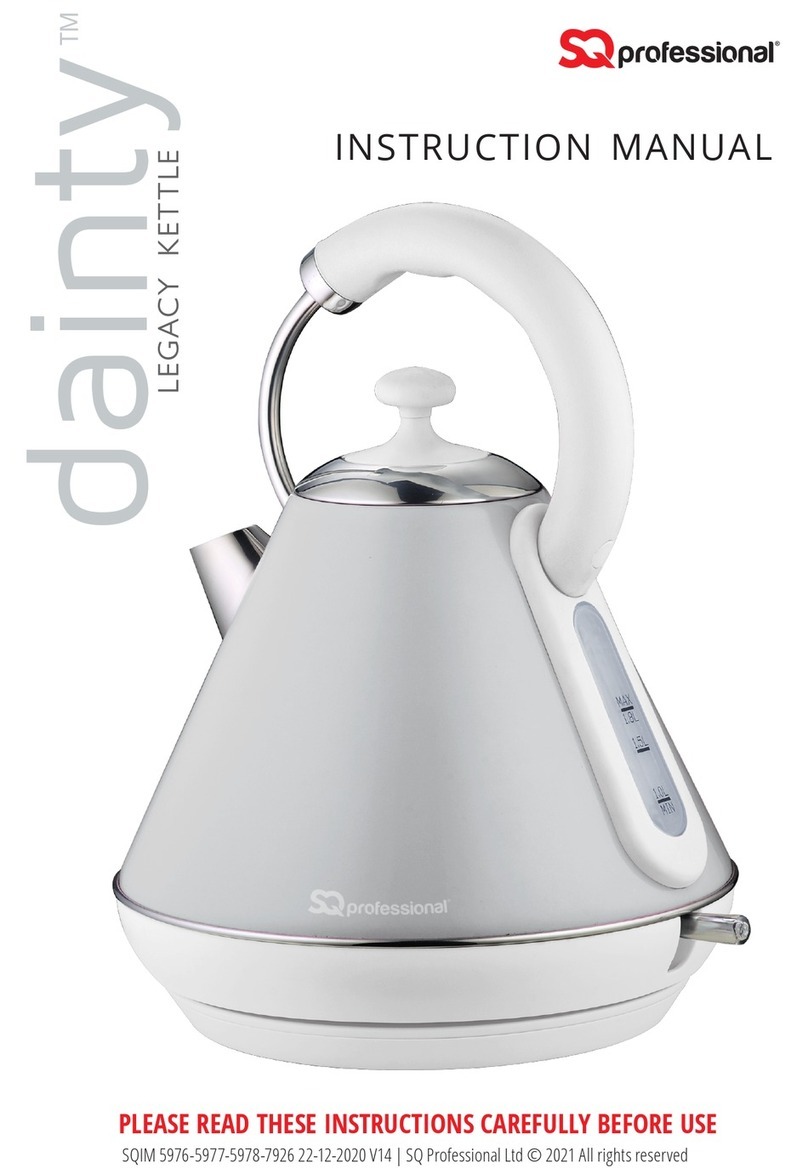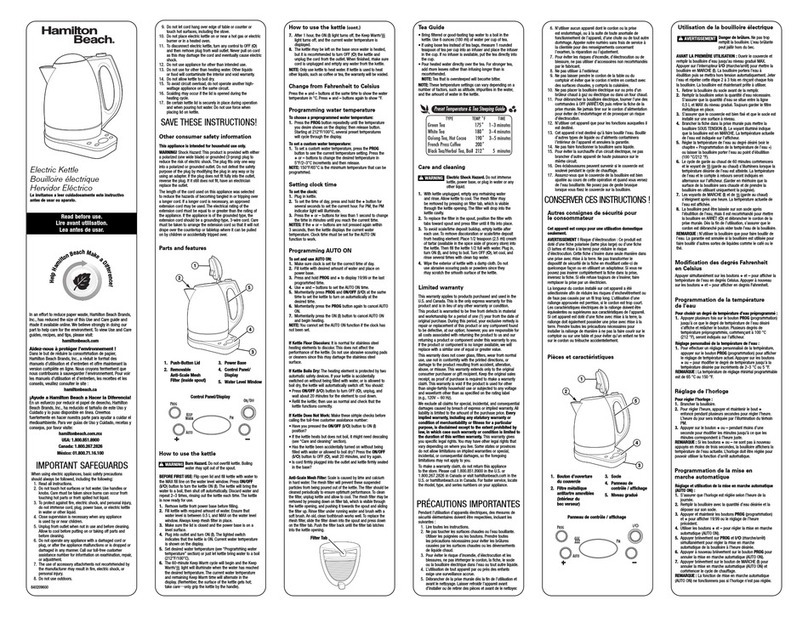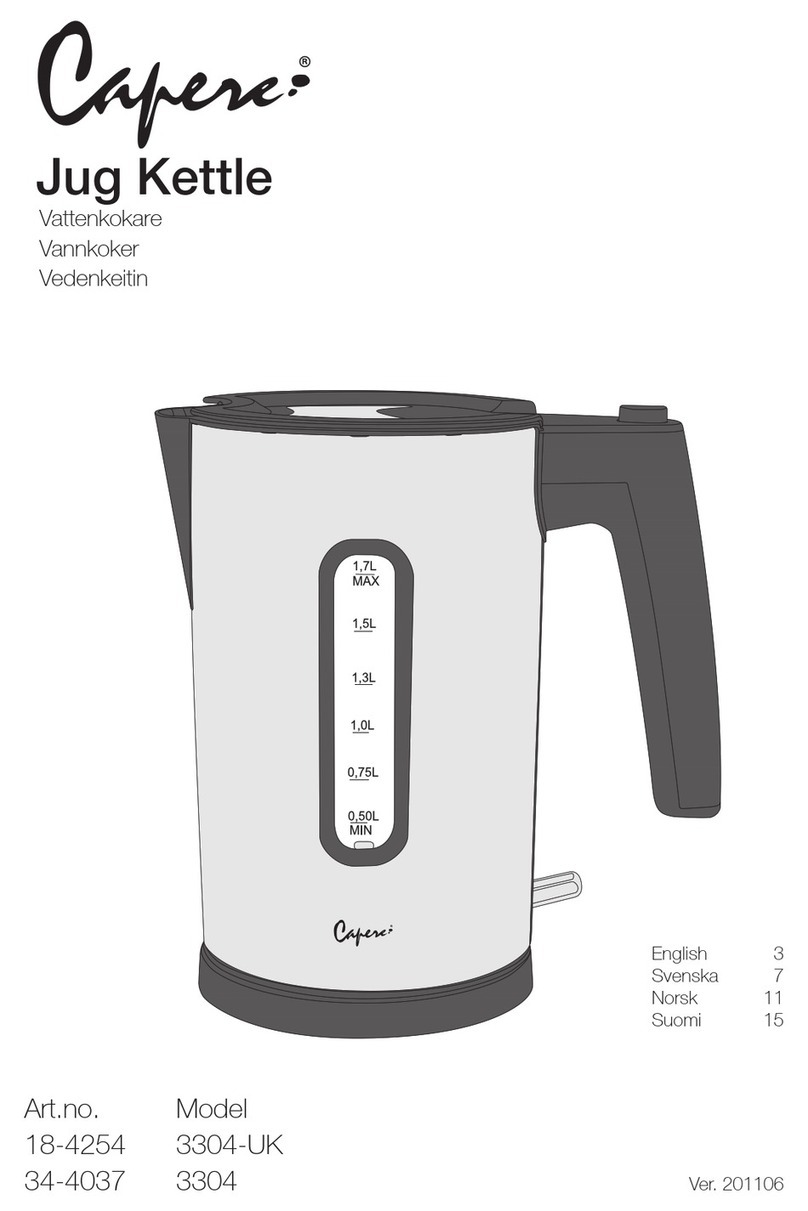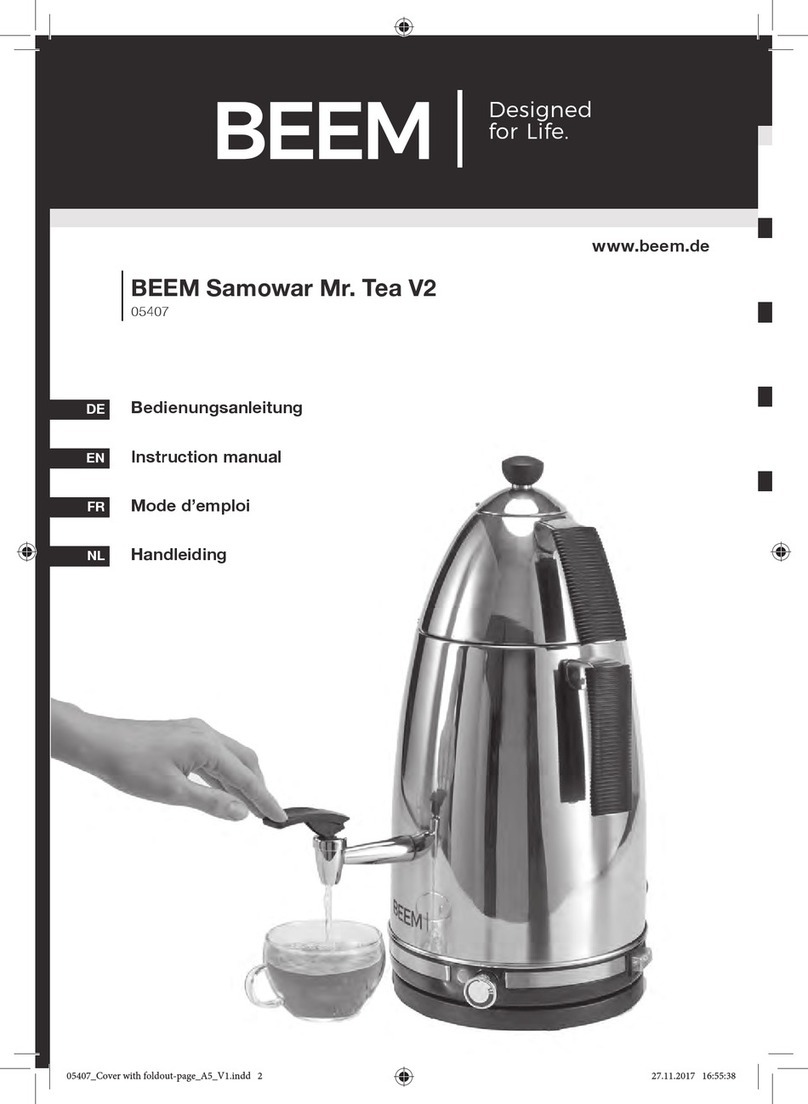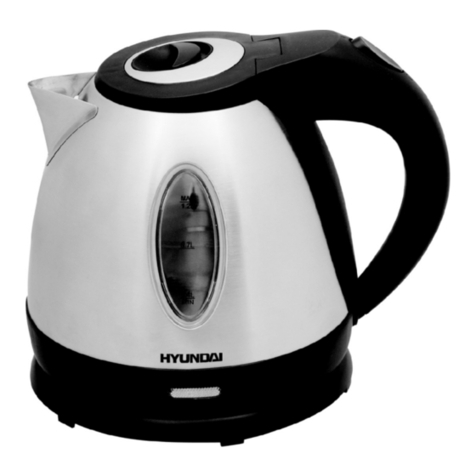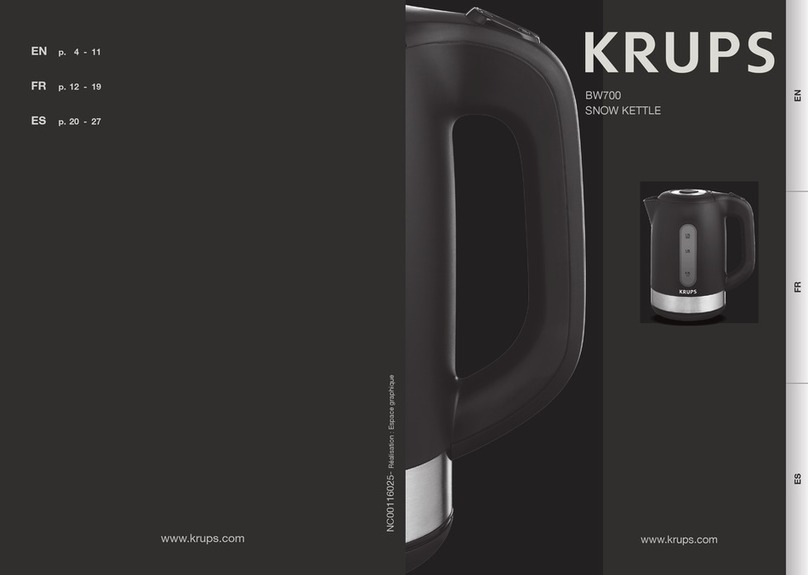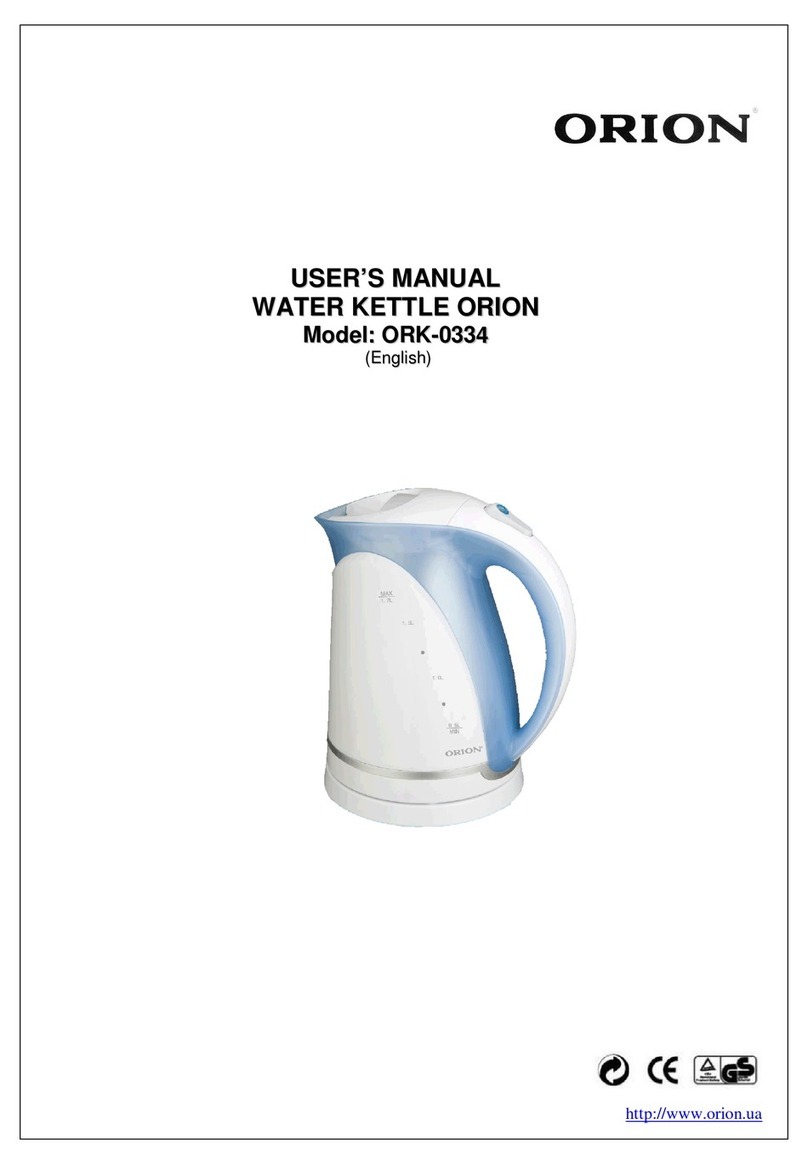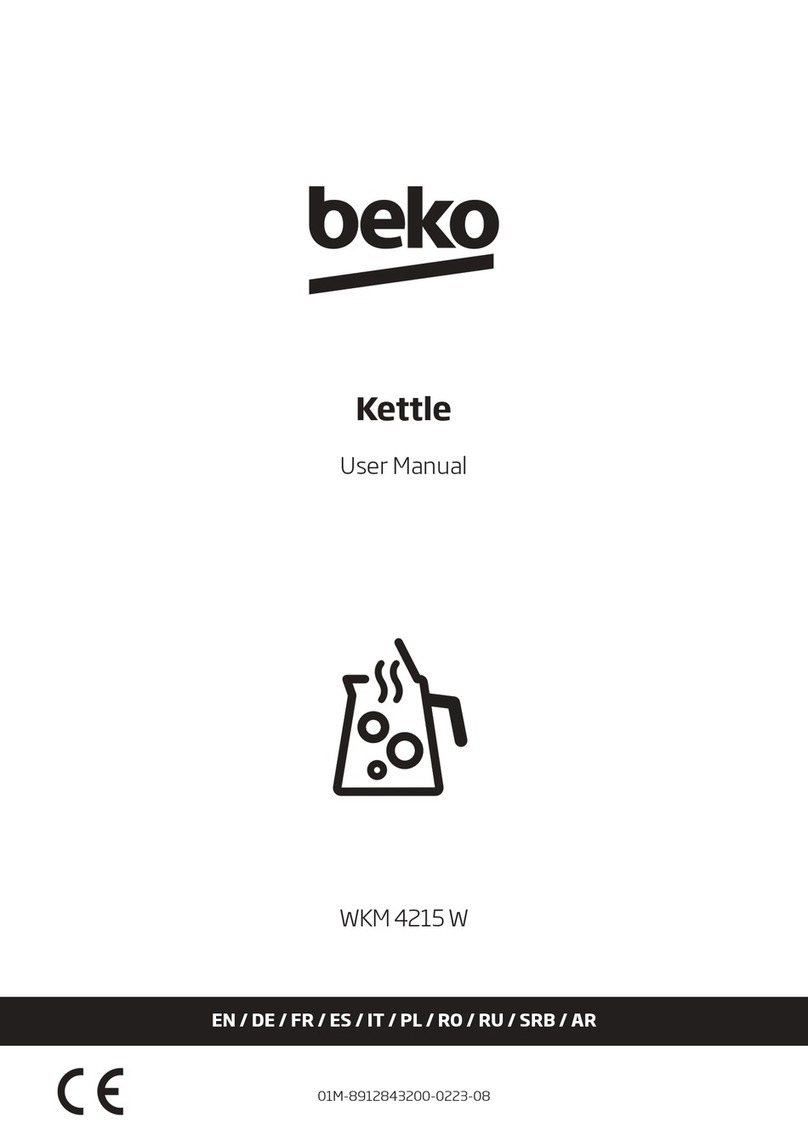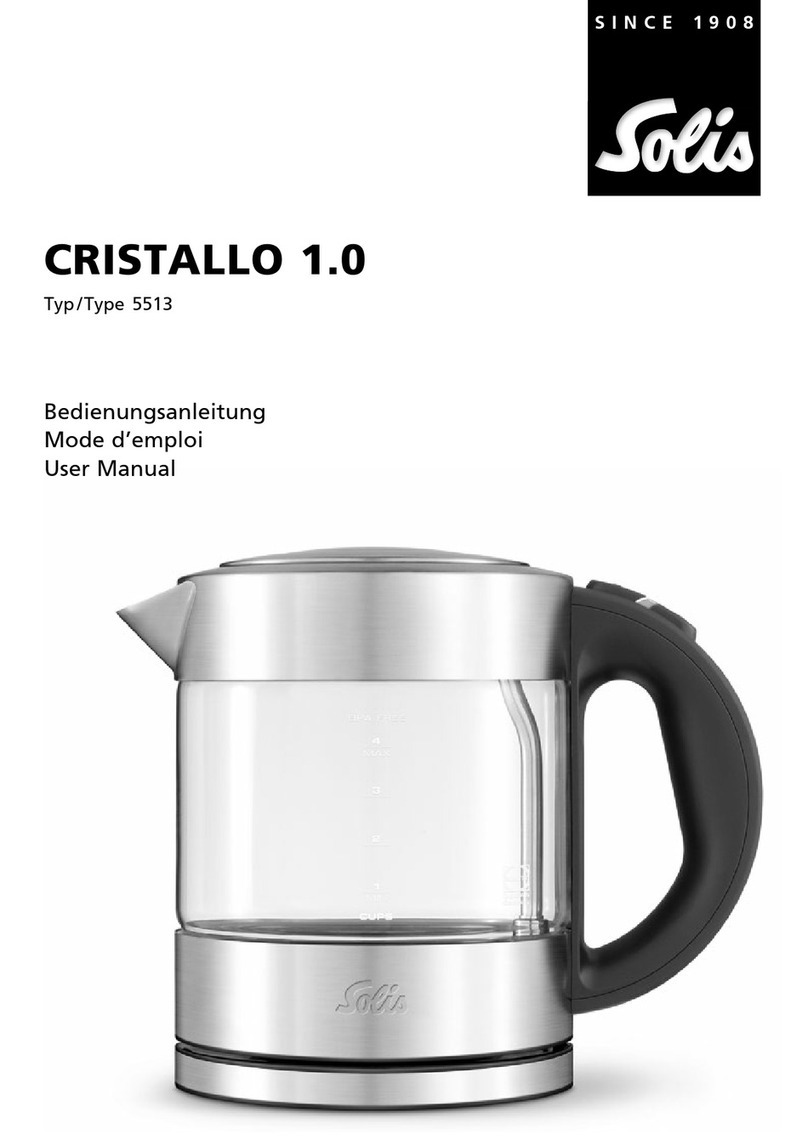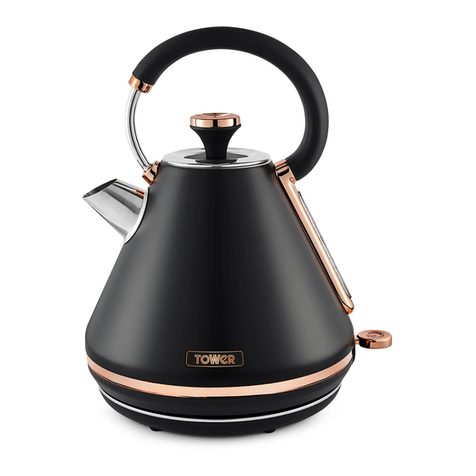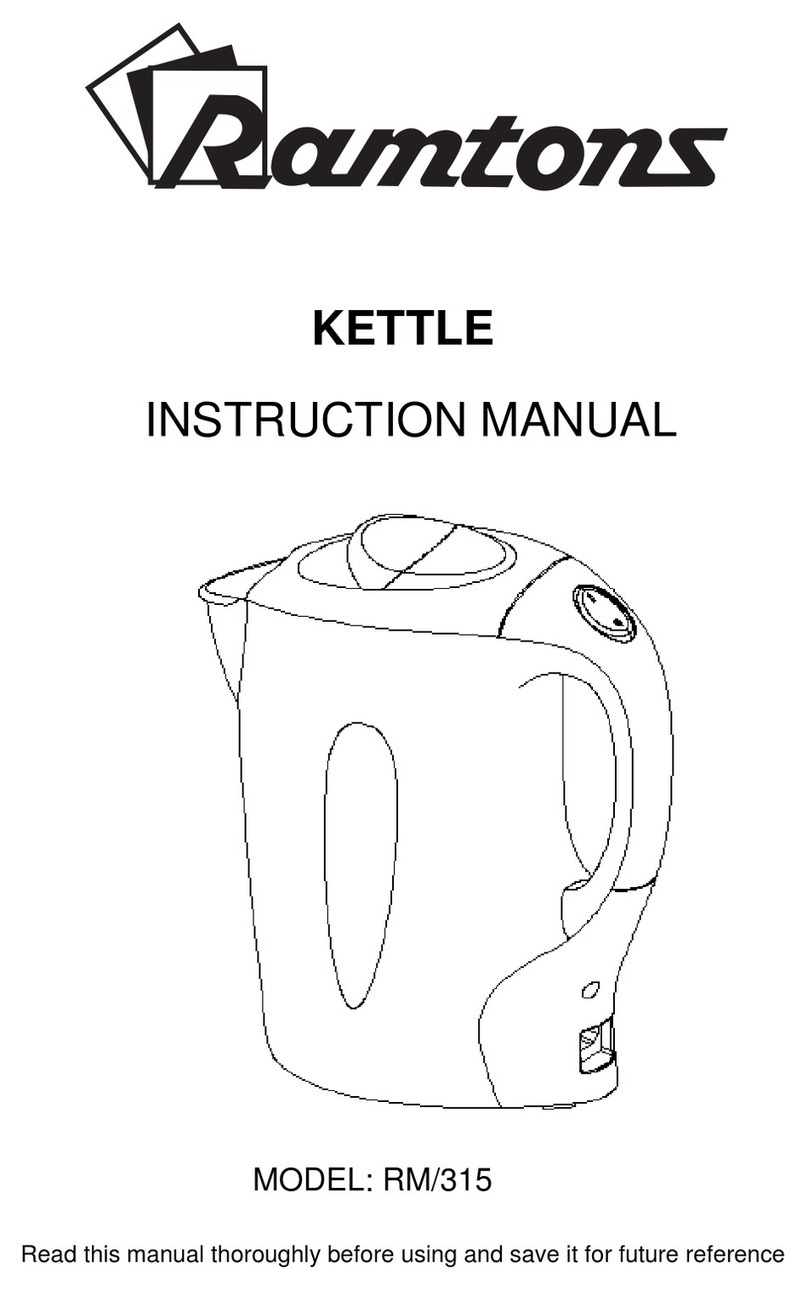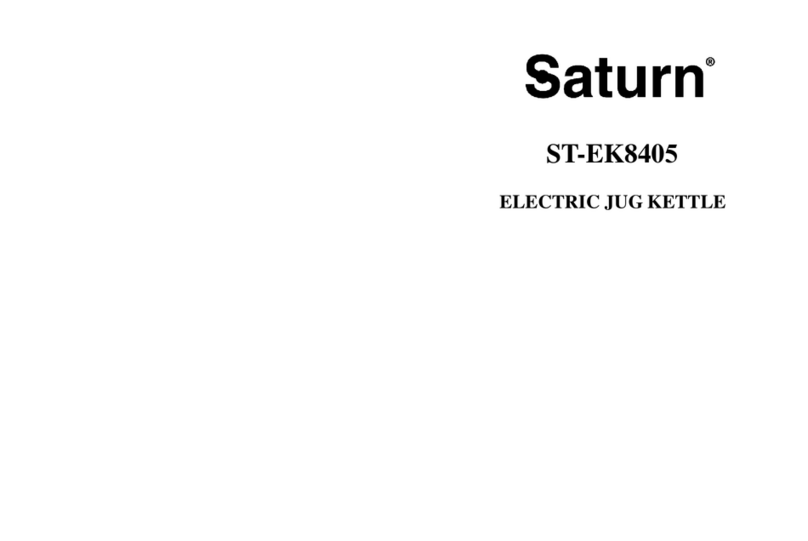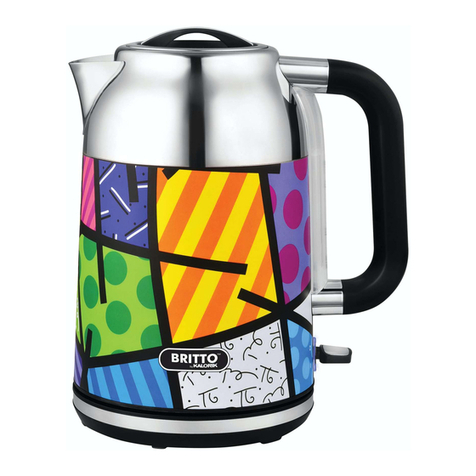USE & CARE
SQPro Senza Electric Kettle
Before using for the first time
1 Fill to maximum, boil, discard the water,
then rinse. Do this 3 times, to remove
manufacturing dust, etc.
Positioning
1 Put the stand on a stable, level surface.
2 Route the cable so it does not overhang,
and cannot be tripped over or caught.
3 Wind excess cable beneath the stand.
Switching on
1 Put the kettle on the stand – take care not
to spill.
2 Plug the stand into a power socket (switch
the socket on, if it’s switchable).
3 Move the switch to ON – the light will glow,
and the kettle will heat up.
Switching off
1 When the water boils, the kettle will switch
itself o, and the light will go out.
2 To switch o manually, move the switch to
OFF.
3 Lifting the kettle o the stand will also
switch it o.
General
1 Remove the kettle from the stand before
pouring.
2 To avoid the risk of splashing, pour slowly
and do not over-tilt the kettle.
3 Do not tilt the kettle backwards – water
might get on to the control area.
4 If this happens, let the kettle dry before
use – sit it somewhere warm for 12 hours.
5 When you lift the kettle, you may see
moisture on the stand. Do not worry – it’s
the steam used to switch the kettle o
automatically, which then condenses and
escapes through vents under the kettle.
6 Discolouration may occur on the oor of
the kettle, and is due to the bonding of the
element to the kettle oor.
Using insufficient water
1This will shorten the life of the element.
2 A boil-dry cut-out will switch the kettle o.
3 To avoid cycling on and o, you must
remove the kettle from the stand and let it
cool down.
Care and maintenance
1 Check that the kettle is switched o.
2 Unplug the stand (switch the socket o
rst, if it’s switchable), and let the kettle
cool down fully.
3 Wipe the kettle, inside and out, with a
damp cloth. You may use a little household
detergent, but if you do, rinse well to avoid
tainting the water.
4 Keep all connectors and sockets dry.
5 Do not put the kettle or stand in liquid.
6 Do not use harsh or abrasive cleaning
agents or solvents.
Descale - even in soft water areas
1 Limescale may be white, coloured, even
rusty-looking, but it is normally visible.
2Phosphate scale is not generally visible,
but it is there, even in soft water areas.
3 All scale causes overheating, reduces the
kettle’s life, and may trigger the boil-dry
cut-out.
4To keep your kettle in working order,
descale at least once a month.
5 Use a descaler suitable for plastic products
(all kettles have plastic parts).
6Follow the instructions provided with the
descaler, rinse several times, then ll,
boil and discard the water, to ensure no
residues are left.
7Products returned under guarantee with
faults due to scale will be subject to a
repair charge.
